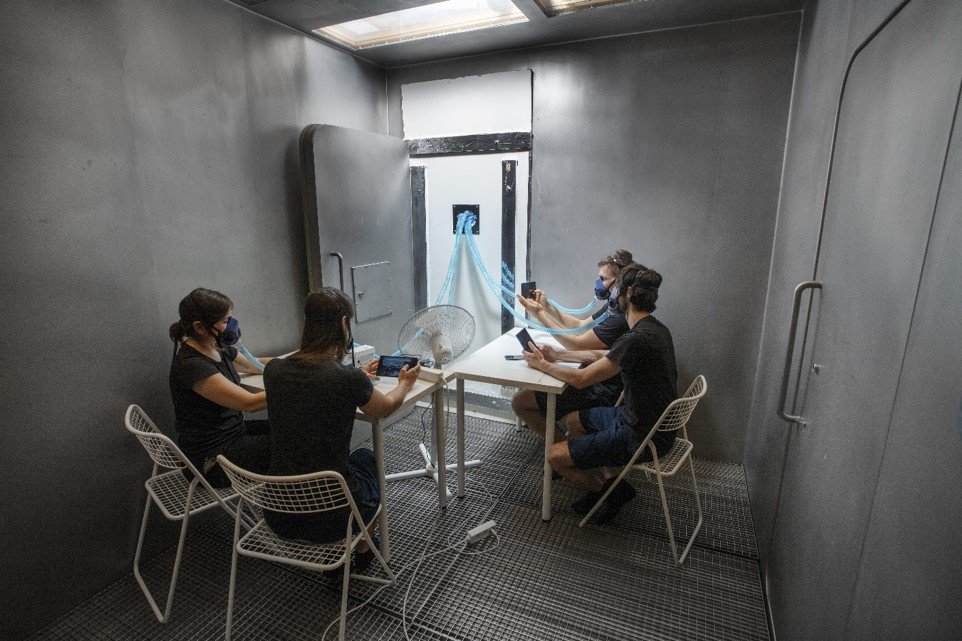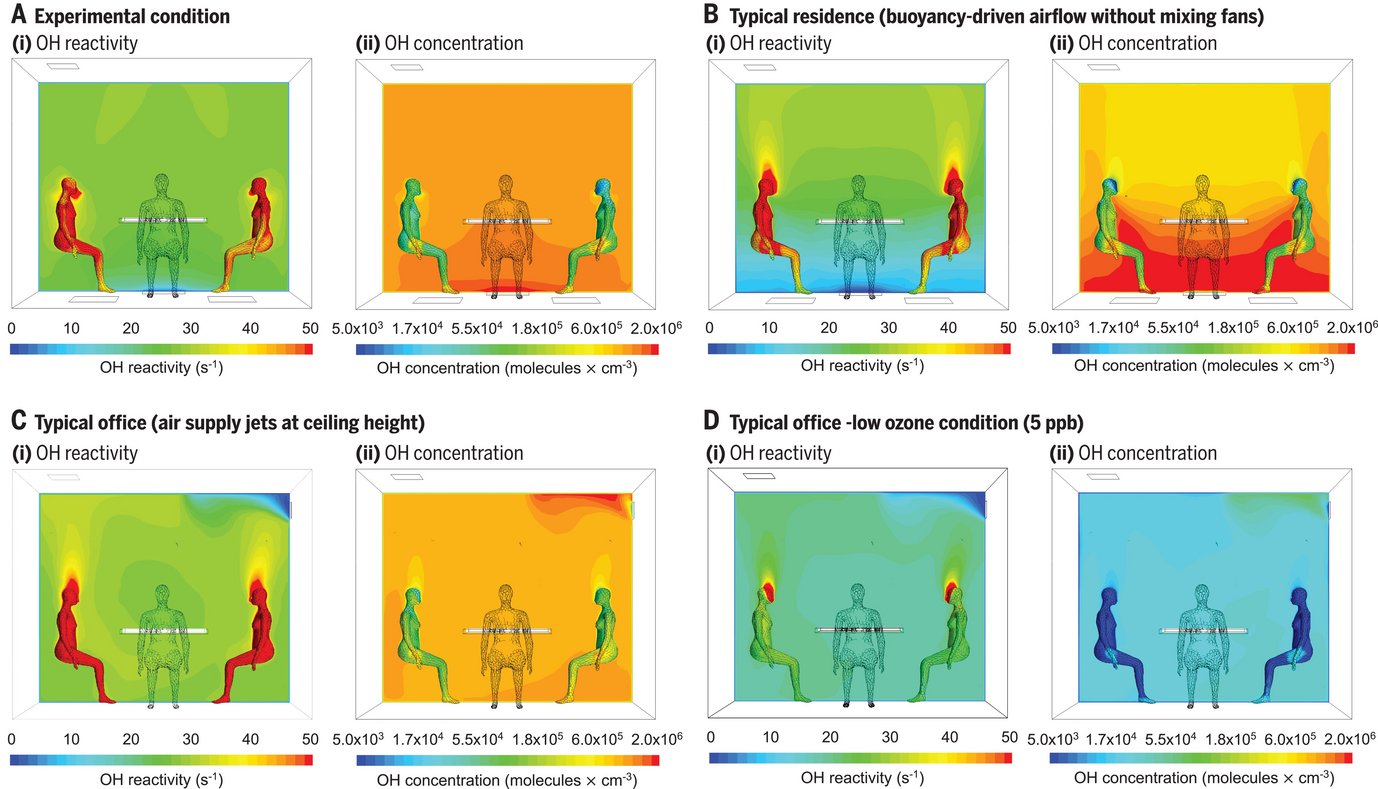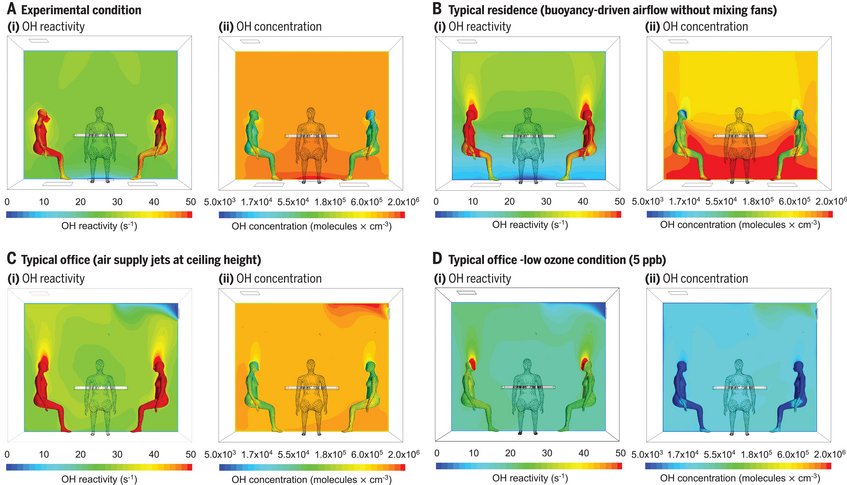Indoor Chemistry Projects

Since the average person spends most of their life in enclosed spaces (around 90% for the average American or European), the composition of indoor air is an important factor for our daily exposure to chemicals, and therefore to human health. We are interested in the chemical emissions of people, via breath and through the skin. We have examined how these emissions vary in response to ozone, temperature, clothing cover, humidity, age and even emotional state. While our emissions do change with temperature and by stopping showering, the strongest effect was seen for ozone. People are the single common source in any living space and we are focused on characterizing the volatile organic compound emissions as well as the subsequent air chemistry. Interestingly we have found that when ozone reacts on human skin indoors, oxidizing OH radicals are generated in the air around us. This field can be perturbed by the application of perfume and skin lotion.

Publications
Zannoni, N., P. S. J. Lakey, Y. Won, M. Shiraiwa, D. Rim, C. J. Weschler, N. Wang, L. Ernle, M. Li, G. Bekö, P. Wargocki, J. Williams. The Human Oxidation Field. Science 377, 6610 pp. 1071-1077. (2022).
Zannoni, N., P. S. J. Lakey, Y. Won, M. Shiraiwa, D. Rim, C. J. Weschler, N. Wang, T. Arnoldi-Meadows, L. Ernle, A. Tsokankunku, G. Bekö, P. Wargocki, J. Williams. Personal care products disrupt the human oxidation field. Science Advances, 2025 accepted, In press.
Wang, N., L. Ernle, G. Bekö, P. Wargocki, and J. Williams. Emission Rates of Volatile Organic Compounds from Humans. Environ. Sci &Tech. 2022. 56, 8, 4838–4848
Wang, N., T. Müller, L. Ernle, G. Bekö, P. Wargocki, and J. Williams. How Does Personal Hygiene Influence Indoor Air Quality? How Does Personal Hygiene Influence Indoor Air Quality? Environ. Sci. Technol. 58, 22, 9750–9759. https://doi.org/10.1021/acs.est.4c01698
Wang, N., N. Zannoni, L. Ernle, G. Beko, P. Wargocki, M. Li, C.J. Weschler & J. Williams: Total OH reactivity of emissions from humans: in situ measurements and budget Analysis. Environ. Sci. Technol., 55(1), 149-159, doi.org/10.1021/acs.est.0c04206, 2021.
C. Arata, N. Heine, N. Wang, P. K. Misztal, P. Wargocki, G. Bekö, J. Williams, W.W. Nazaroff, K. R. Wilson. A. H. Goldstein. Heterogeneous Ozonolysis of Squalene: Gas-Phase Products Depend on Water Vapor Concentration. Environ. Sci. Technol. 2019, 53, 24, 14441-14448.

